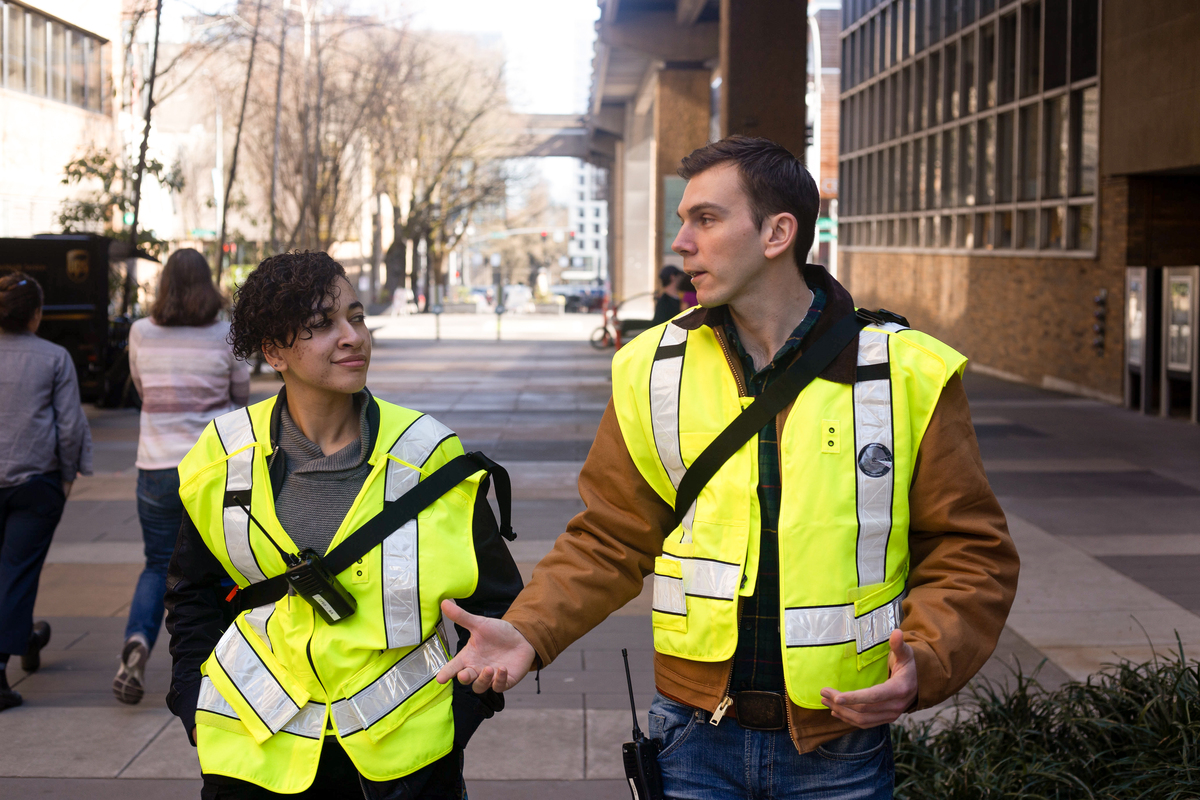Mister Rogers is back in the ‘hood
It’s just past noon on the opening day of the Mister Rogers’ Neighborhood exhibition at the Portland Children’s Museum 2nd Generation, and I’m wading through a swarming sea of kids and parents. Portland Children’s Museum Director of Marketing and Communications, Christy Adams, looks back to say, “Normally, we get about 1,200 visitors a day, which is 9-5. Today, as of right now, we’ve probably had about 800.”
The 2,500 square-foot exhibition features a life-size recreation of Rogers’ television house and “land of make-believe” that took 10 days to assemble.
The exhibit is replete with interactive, hands-on stations, including musical instruments (if tambourines and bongos count as musical), a puppet stage where children can watch their performance on a television, and numerous dress-up stations featuring either baggy cardigan sweaters and blue Keds, or regal capes and crowns (consider yourself warned about head lice).
The original exhibit was assembled in collaboration with Fred Rogers in 1998 by the Pittsburgh Children’s Museum. The presentation toured the country then returned to Pittsburgh for refurbishing. The Portland Children’s Museum is the only stop on the West Coast this tour.
The show is based upon the wildly popular children’s television show “Mr. Rogers’ Neighborhood,” which ended its 33-year run in 2001, after taping over 900 episodes.
�����
Despite Fred Rogers’ death in Feb. 2003, the show lives on in re-runs on PBS, which picked up the show in 1968. So, what is the appeal? How did the slow-paced, soft-spoken show become such a cross-generational success and cultural icon? The answer is simple: the show’s namesake, the man himself, Mr. Fred Rogers.
While trying to wrangle her 6-year old sister, 18-year old Valerie Wernet summed up the show’s appeal: “Mr. Rogers didn’t talk down to children. He wasn’t patronizing. He was a trustworthy adult telling kids the truth about the world. He even talked about death when his goldfish died. I can’t remember any other children’s show handling that topic. At least, not when I was growing up.”
Today’s children are no less charmed than those of yesteryear. Despite the abundance of A.D.D.-errific children’s programming, I encountered many loyal Mister Rogers’ Neighborhood-watchers in the under-10 set. And, while their parents may have forgotten what exactly made the show so great, they still remember how they felt when they watched it. Enough to smile as their rugrats drag them through Mr. Rogers’ door and into his neighborhood.


